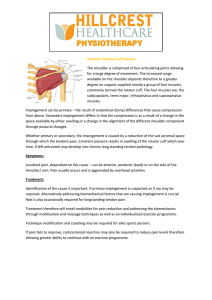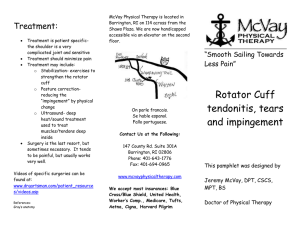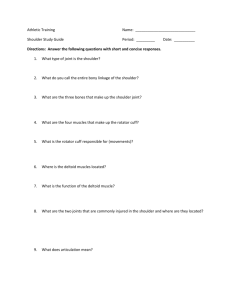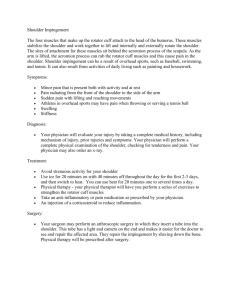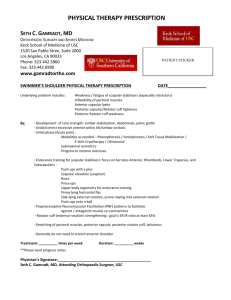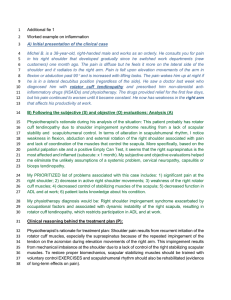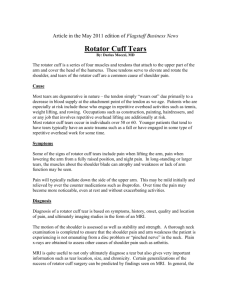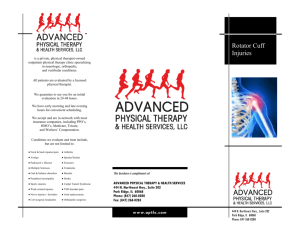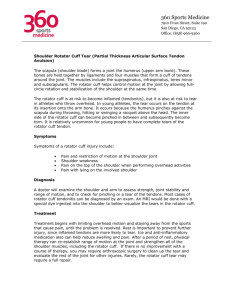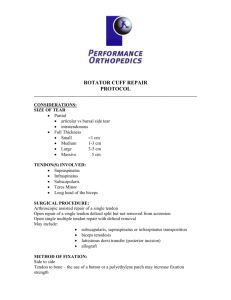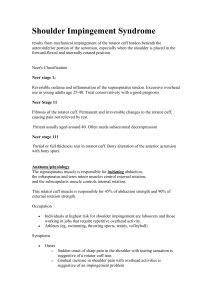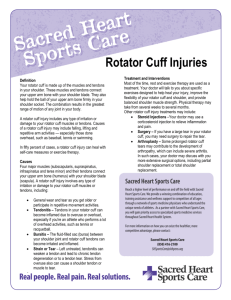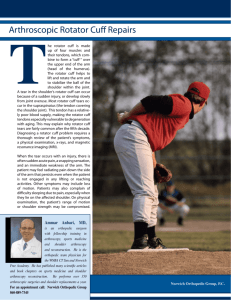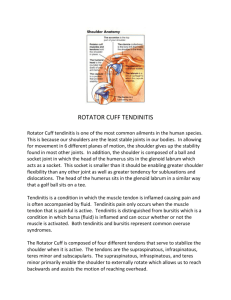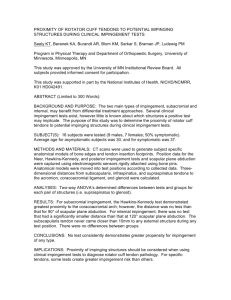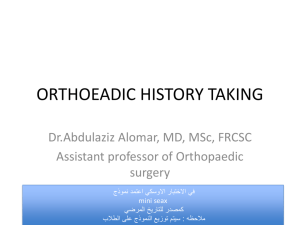Shoulder MRI - MedPOINT Management
advertisement
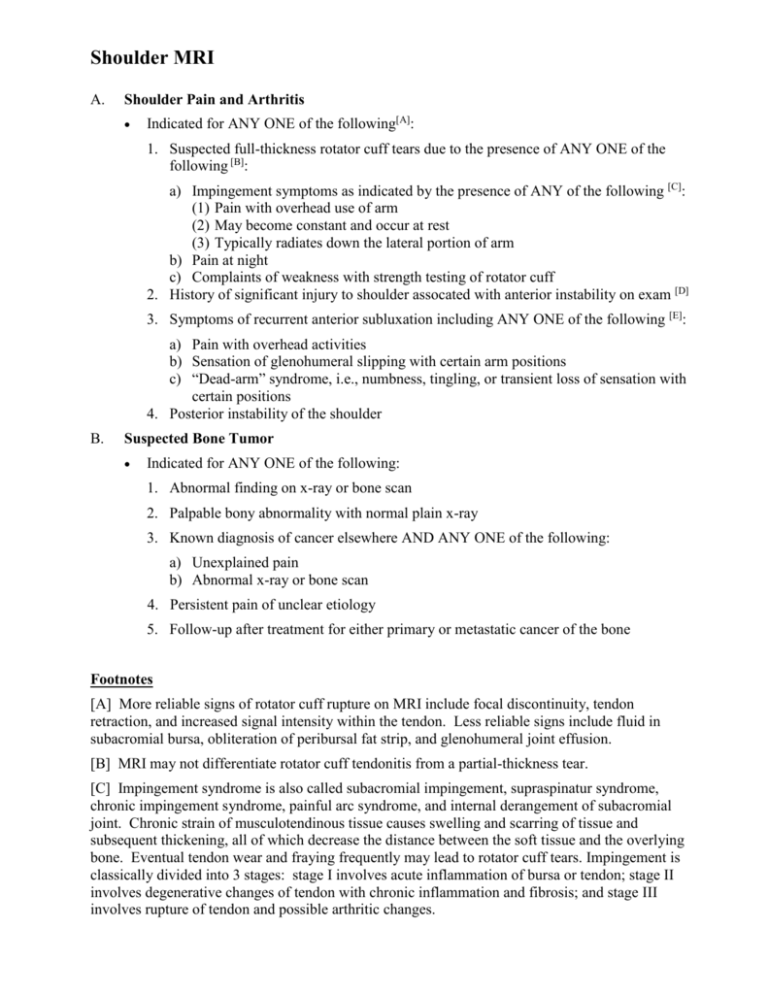
Shoulder MRI A. Shoulder Pain and Arthritis Indicated for ANY ONE of the following[A]: 1. Suspected full-thickness rotator cuff tears due to the presence of ANY ONE of the following [B]: a) Impingement symptoms as indicated by the presence of ANY of the following [C]: (1) Pain with overhead use of arm (2) May become constant and occur at rest (3) Typically radiates down the lateral portion of arm b) Pain at night c) Complaints of weakness with strength testing of rotator cuff 2. History of significant injury to shoulder assocated with anterior instability on exam [D] 3. Symptoms of recurrent anterior subluxation including ANY ONE of the following [E]: a) Pain with overhead activities b) Sensation of glenohumeral slipping with certain arm positions c) “Dead-arm” syndrome, i.e., numbness, tingling, or transient loss of sensation with certain positions 4. Posterior instability of the shoulder B. Suspected Bone Tumor Indicated for ANY ONE of the following: 1. Abnormal finding on x-ray or bone scan 2. Palpable bony abnormality with normal plain x-ray 3. Known diagnosis of cancer elsewhere AND ANY ONE of the following: a) Unexplained pain b) Abnormal x-ray or bone scan 4. Persistent pain of unclear etiology 5. Follow-up after treatment for either primary or metastatic cancer of the bone Footnotes [A] More reliable signs of rotator cuff rupture on MRI include focal discontinuity, tendon retraction, and increased signal intensity within the tendon. Less reliable signs include fluid in subacromial bursa, obliteration of peribursal fat strip, and glenohumeral joint effusion. [B] MRI may not differentiate rotator cuff tendonitis from a partial-thickness tear. [C] Impingement syndrome is also called subacromial impingement, supraspinatur syndrome, chronic impingement syndrome, painful arc syndrome, and internal derangement of subacromial joint. Chronic strain of musculotendinous tissue causes swelling and scarring of tissue and subsequent thickening, all of which decrease the distance between the soft tissue and the overlying bone. Eventual tendon wear and fraying frequently may lead to rotator cuff tears. Impingement is classically divided into 3 stages: stage I involves acute inflammation of bursa or tendon; stage II involves degenerative changes of tendon with chronic inflammation and fibrosis; and stage III involves rupture of tendon and possible arthritic changes. Shoulder MRI [D] Anterior subluxations or recurrent dislocations account for about 97% of shoulder instability. Subluxation is defined as partial separation of the humeral head from the glenoid, and dislocation is defined as complete separation of the humeral head from the glenoid. Secondary trauma to the rotator cuff or biceps tendon is not uncommon, particularly with athletes using overhead motions and elderly patients. [E] Patients <20 years of age have a recurrence rate of anterior subluxation or dislocation >90%, and patients <30 years of age >50%. After 40 years of age, the redislocation rate drops precipitously to approximately 10%. Reference: Milliman Care Guidelines, “Ambulatory Care”, 15th Edition.

